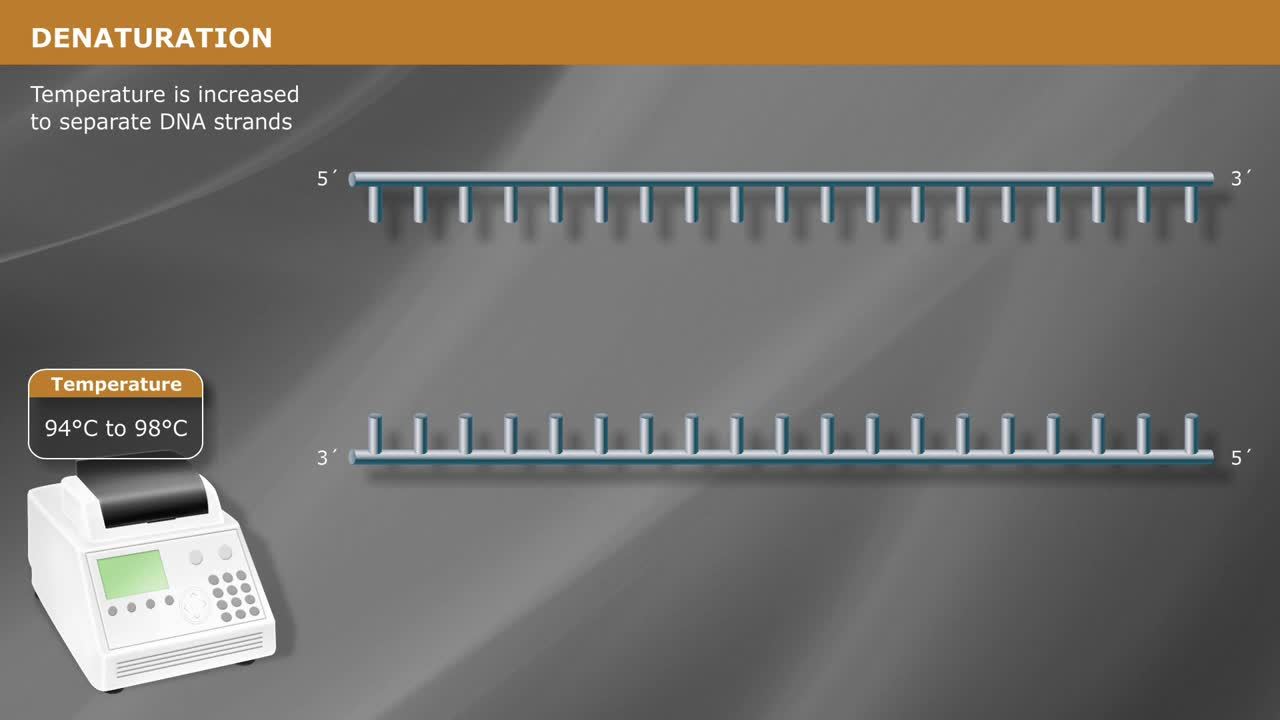Overview of PCR

Script
The first step of amplification reaction is a heating step known as melting, or denaturation, during which the hydrogen bonds that hold the strands together are broken. This effectively separates the two strands. Next, the temperature is decreased during the annealing step. This allows the primers to anneal with the complimentary sequence on the template DNA strands. During the third step of PCR, the temperature is raised slightly and the DNA polymerase extends the primer template duplex by adding the complimentary nucleotides one by one to the nascent DNA strand.
Once the first strand is copied, the process is repeated by cycling back to the first reaction temperature for the next round of denaturation, annealing, and extension. This three step temperature cycle is repeated approximately 30 times, which results in exponential application of the sequence of interest. This method of DNA amplification can create up to two billion copies of the original DNA only after 30 cycles.
Visit ConfidentPCR.com for help with selecting the right DNA polymerase for your experiment.

